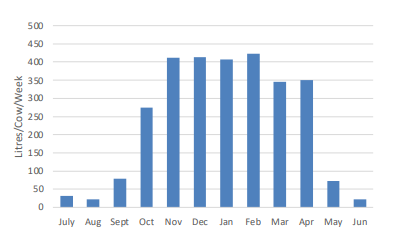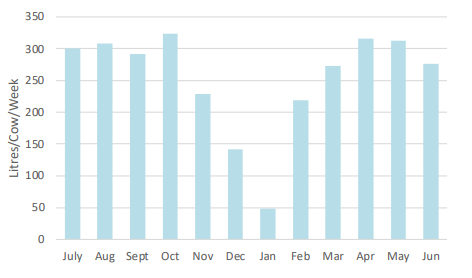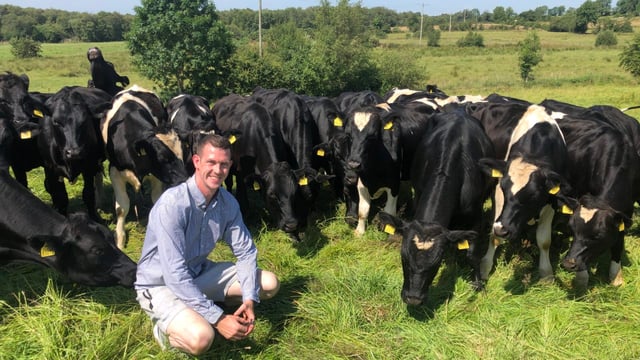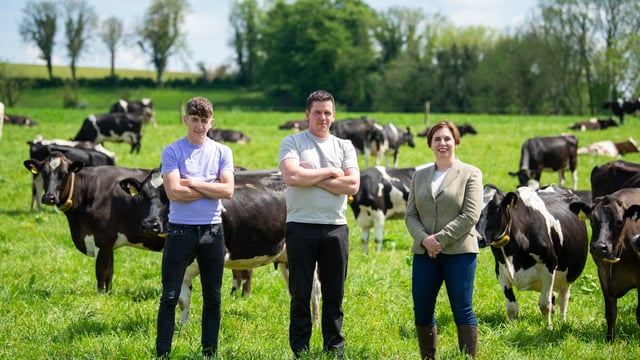Slurry and dairy soiled water volume estimates likely to increase
The advantages of having adequate slurry and dairy soiled water storage to spread nutrients at optimal times was heavily highlighted at Moorepark '25.
Spreading nutrients at optimal times has proved to be a huge asset in terms of improving water quality - rather than losing these valuable nutrients through leaching to waterways, the soil has the capacity to absorb and utilise them.
It has been known for quite some time that the current 330L of slurry storage per cow per week and the 210L dairy soiled water storage per cow per week was underestimated, and an increased estimate for each is inevitable.
Initially, these findings may start people to think of extra investment and regulation but, having additional storage and being comfortable to spread when you want and not when you have to is a critical element in growing more grass in a economically and environmentally sustainable fashion.
To grow more grass and achieve that 14-15t dry matter (DM)/ha to reduce feed costs and maximise milk solids through homegrown feeds, every aspect of grassland management needs to be examined - and nutrient application is a fundamental part of that.
The first step in being effective with slurry and soiled water application is adequate storage, and having the ability to spread it on the better days of the year.
A monitoring programme was put in place in full in the first half of 2023, which monitored 100 farms and conducted surveys to catalogue both the storage facilities and their typical management.
The elements covered in the typical management included stock, parlour details, washing routine, uncovered areas, and potential additional sources - whether it be rainwater or silage effluent.
Measuring equipment was installed in each tank, which were categorised into those collecting slurry only, soiled water only, or combine slurry and soiled water tanks.
The records associated with management were used to establish the total known contributions to each tank, which allowed for an equivalent per cow figure to be estimated.
From this study, the mean volume collected was 413.8L/week. The data is presented based on peak stock numbers contributing to each tank as equivalent average per cow per week.
It highlights the changes in housing rate over the year, as well as the influence of other sources outside of the housing period.
The average litres /cow/week collected in slurry tanks for each month in the period from July 2023 to June 2024 as per Teagasc are presented below:
The mean volume collected in peak months from July to October and March to June was 300L/cow/week.
The average litres/cow/week collected in soiled water tanks for each month in the period from July 2023 to June 2024 as per Teagasc are presented below:
The current volumes have been in place since the Nitrates Directive was implemented in 2006. Since then, there has been a drastic increase in productivity of the typical Irish cow.
The study also suggests that a significant volume of water getting into storage tanks on farms, amounting to possibly 20/40L/cow/week.
This is still preliminary data and should not be interpreted as the final outcome. The data will be used to inform the Department of Agriculture, Food and the Marine (DAFM)
This data highlights the need for farmers to avail of the nutrient storage scheme to potentially stay compliant in the near future.
The latest Environmental Protection Agency (EPA) data suggests a 10% national reduction in river nitrate concentration during 2024, though the agency said nitrates still "remain too high in many parts of the country".
This shows that the industry is moving in the right direction and the whole farmer and industry approach has been improving water quality. However, farmers need to start investing in more slurry storage.
The main issue delaying the process of building extra slurry storage for many farmers is the planning rules, which take up to three months to approve after the application was put in.
According to the Irish Farmers’ Association (IFA), the exemption under planning rules for slurry storage is “expected” to be in place to coincide with tranche 9 of the Targeted Agricultural Modernisation Scheme (TAMS), which is set to open on September 6 and close on December 5.
IFA dairy chairperson Martin McElearney, said this is "frustrating", noting that the delay “means that farmers who want to apply for TAMS now or begin their work this summer will not be able to avail of any planning exemption”.







